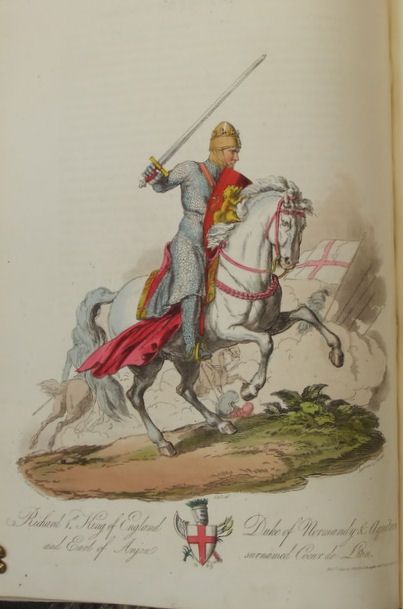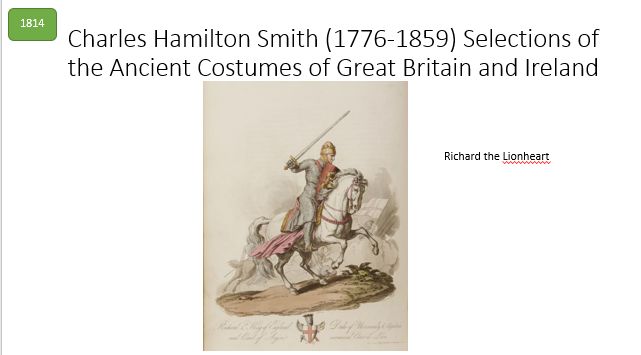1 of 3
Lieutenant-colonel Charles Hamilton Smith was born into a Flemish family
but was soon sent to Richmond in Surrey to get an education. In 1787
he returned to Flanders to study in a military academy and in 1797 joined
the British Dragoons in the West Indies where he became a brigade major.
He twice came to Coventry working for Army recruitment. He also served
in America and Canada but retired on half-pay in 1820 living in Plymouth.
Wherever he was based he sketched and also gathered scientific information.
He accumulated thousands of watercolour drawings and papers. These were
not just costumes but scientific drawings. He is described by Wikipedia
as English artist, naturalist, antiquary, illustrator, soldier and spy.
He is known for his Costume of the Army of the British Empire, Costume
of the Original Inhabitants of the British Islands and The Ancient Costume
of England (not in the Charlecote Library). He provided some of the
illustrations for Jardine's Naturalist Library which is in the Charlecote
library and which we will see later. The Ancient Costume of Great Britain
and Ireland traces the evolution of clothing, arms and decorations from
the Anglo-Saxon Eighth century through to the reign of Henry VII, with
images of men and women, royalty and peasants, occupations and pastimes,
and even naval vessels. It was originally issued in 15 separate parts,
1811-13. It neatly complements Pyne’s Costume of Great Britain.



